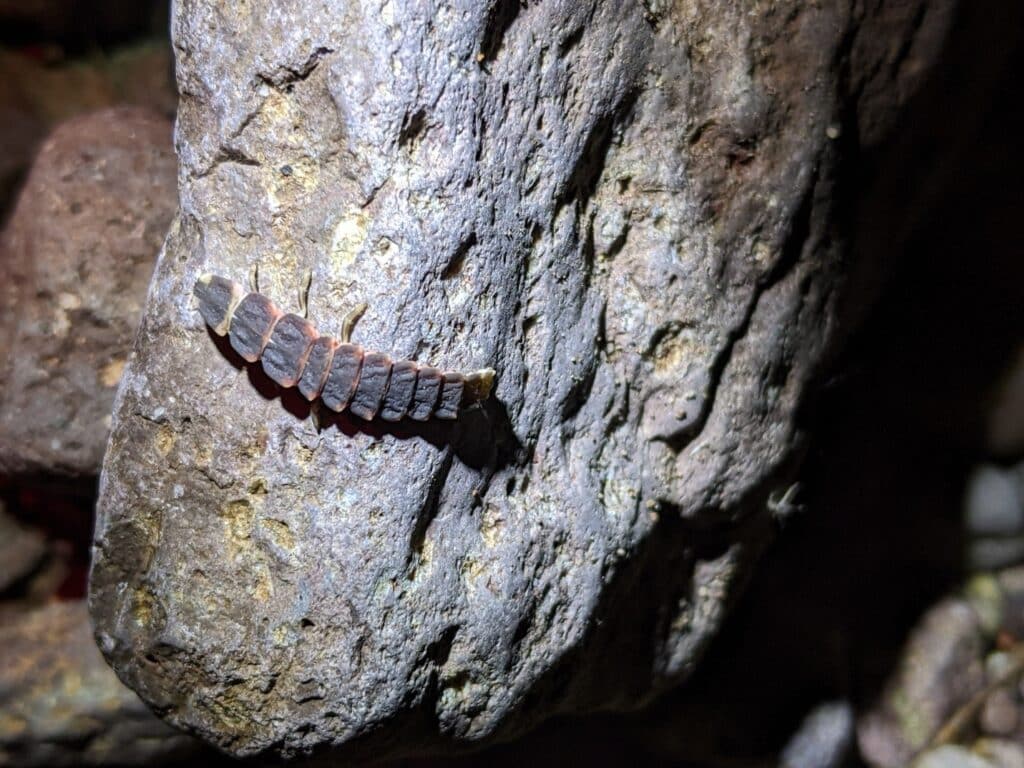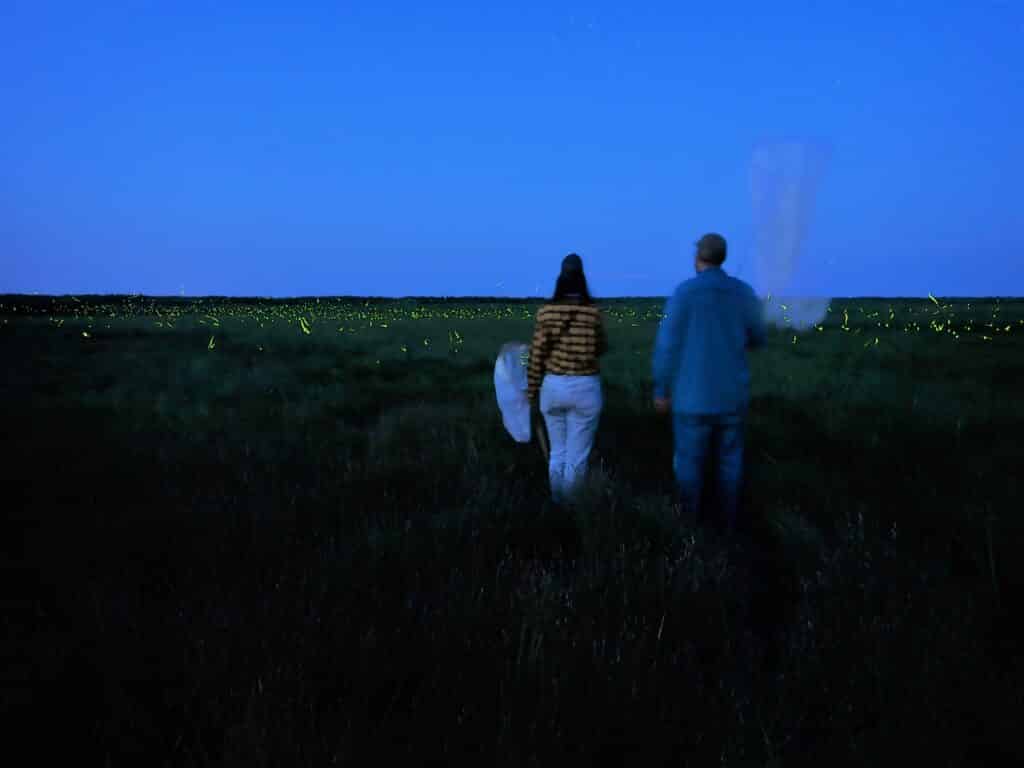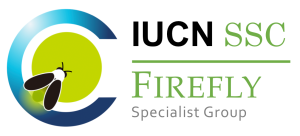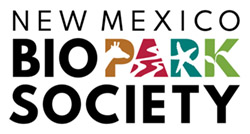By Candace Fallon, Senior Endangered Species Conservation Biologist
Interested in participating in a firefly community science project, but not sure which one to pick? We get it—with several different projects occurring all over the country, it can be tricky to figure out! Firefly Watch used to be the firefly community science project in the US, but now that they’ve closed down their program, where do you turn? While we would love for everyone to participate in the Firefly Atlas, it may not be the best choice for every situation. Luckily, there are a number of options for different goals, geographies, and levels of commitment. To help you determine which program (or programs!) is best for you, we’ve compiled a short guide based on several different scenarios.
Scenario 1: You see flashing fireflies somewhere in the western US. You remember the location, date, and time, but don’t have much more information.
Western Firefly Project
Run by the Natural History Museum of Utah, the Western Firefly Project seeks reports of flashing firefly activity in the Intermountain West, including Utah, Idaho, Wyoming, Colorado, New Mexico, Arizona, and Oregon. Just fill out an online form about your observation and check off whether or not someone from the project can follow up with you for more details. Reports are investigated and verified by a team of firefly researchers associated with the project, including folks at the Museum as well as biologists with the New Mexico BioPark Society and the Xerces Society, among others. In a region where flashing fireflies often go unnoticed, this initiative has led to exciting discoveries.
Scenario 2: You were out and about—say, hiking, gardening, or camping—and happened to come across a firefly. You have a photo or two along with date and location information.
iNaturalist
iNaturalist is probably the most well-known crowd-sourced biodiversity platform in the world. After creating an account, users can add photos and basic observation data like location, date, and natural history notes.
There are numerous projects within iNaturalist that essentially collate firefly observations, making it easy to see what species have been reported from a given area. For example, the Fireflyers International Network started a firefly project for the US and Canada in 2019, which has since compiled tens of thousands of iNaturalist observations of fireflies and other bioluminescent beetles (such as railroad worms and glowing click beetles). Smaller in geographical scope, projects like Lampyridae of the Southwest US and Northern Mexico and Pacific Northwest Fireflies give users and project managers a better sense for what species occur regionally, and help with delineating species distributions at these smaller scales.
This crowdsourced dataset is a good way to explore the distribution and seasonality of widespread, commonly encountered species, as well as to find additional images of species that are of conservation concern. However, most of these iNaturalist observations lack flash pattern details (which are sometimes required for species-level identification), so when it comes to flashing firefly species (aka lightning bugs), many are limited in their potential for verification to species.
Firefly Atlas
Similar to iNaturalist, Firefly Atlas accepts “incidental” observations from the US and Canada, which are essentially observations of fireflies you make while doing things like hiking, hanging out in your yard, or visiting your local natural area. You will need a photo and details about the time, date, and location of your observation. Bonus points if you also took down some notes on flash patterns, habitat, or environmental variables, like temperature. If you did, there are optional fields for filling in that information, too. Flash pattern details are often needed for species-level identification of flashing species, so submitting your data to Firefly Atlas rather than iNaturalist means there’s a better chance of getting your observation verified at the species level. As with iNaturalist, you can submit observations of any life stage for any firefly type (flashing, glow-worm, or day active).

Scenario 3: You’re really interested in fireflies, want to do a full survey focused on one or more species, and have access to a site where you know or suspect they occur.
Firefly Atlas
In addition to accepting incidental observations of fireflies, the Firefly Atlas also accepts data from surveys conducted using the Firefly Atlas protocol and data sheets. This platform is ideal if you would like to conduct surveys for a particular species or group of species (especially focal species) and have access to a place where you know or suspect they occur. Unlike some other firefly community science programs, Firefly Atlas accepts observations of glow-worms and day active species, in addition to flashing species. It also records survey effort, since participants record the amount of time spent surveying and a rough estimate of the area surveyed. And unlike all the other programs, Firefly Atlas captures negative data; that is – even if you don’t see any fireflies, the effort is still recorded. These details are extremely helpful for researchers who are curious about where surveys have been conducted, at what time of year, and whether fireflies are or are not being observed.
Prior to conducting surveys, participants are asked to view a short training video, familiarize themselves with their local firefly fauna, and read through the protocol and data sheets. In addition to collecting data on weather, habitat, and possible threats, participants also take photos and collect information on any fireflies observed, including flash pattern (if present) and estimated number of individuals seen. If you decide to go this route, we encourage you to get out there safely and responsibly by ensuring you have permission to be on site, telling someone your plans and return time, scoping sites during the day, and—ideally—going with at least one other person.

Other programs that are specific to an individual state
In addition to the projects described above, there are a number of state-based projects seeking to gather more details on species diversity, distribution, flash patterns, and threats. We are aware of a couple in Colorado and West Virginia, but there are likely other ones out there!
Colorado Firefly Flash Pattern Project
The Peleg lab at the University of Colorado Boulder seeks volunteers to help build a firefly flash pattern dataset for Colorado by recording 3D video of firefly flashes. Participants who have seen fireflies around their neighborhoods will be loaned a kit containing two GoPro cameras, tripods, and a hard drive. Just place the cameras one meter apart as close to the fireflies as you can get and press record! Researchers will process the video and extract the firefly flashes for analysis. To sign up, fill out the Google Form.
West Virginia Firefly Survey
Following up on the success of their previous state-wide Light Up West Virginia community science project, which resulted in observations of 31 different species, West Virginia’s Department of Natural Resources is now launching a second project focused on fireflies in state parks, state forests, and state rail trails. If you see any lightningbugs or glow-worms on state-managed lands in West Virginia, this project is for you!
Carolina Ghost Hunt
Run by North Carolina State University and the North Carolina Museum of Natural Sciences, the Carolina Ghost Hunt seeks to map occurrences of “ghost fireflies” (glow-worm fireflies in the genus Phausis) in the Piedmont region of the Carolinas. Participants search for Phausis fireflies in mixed hardwood and pine forests in the Piedmont region between April and June on nights with temperatures above 60 degrees F and then submit photos and observation details.
The combination approach
There are many ways to get involved with firefly community science, and participating in one does not mean you can’t participate in another. For example, if you notice flashing fireflies on a camping trip in Colorado, you can submit that observation to the Western Firefly Project. Then, after learning more about the fireflies of the area, you could return on another night and do a full survey for the Firefly Atlas. Same goes for iNaturalist observations – perhaps you submit a photo you took while on a hike, but then return at a later time to do a full survey report for the Atlas. If you do happen to collect and report data for multiple programs after a single observation or survey, it’s helpful to note that you are cross-posting, and provide links. For example, check out this iNaturalist observation, which links to the full survey in the Firefly Atlas.
Contributing to firefly conservation, one observation at a time
However you decide to approach it, keep in mind that any level of participation or data collected is valuable, from a quick photo taken with your smart phone to a full survey effort. Fireflies are still surprisingly understudied (over half of known species in the US and Canada are considered data deficient!), and we lack even the most basic distribution information for a lot of species. By sharing your observations with these programs, you not only learn a little bit more about these amazing beetles, but also help the wider scientific community better understand where fireflies occur, how widespread or rare certain species might be, what habitats are important to them, and what threats they may be facing. This kind of information gleaned from hundreds or even thousands of people over large geographic areas is invaluable, especially when paired with museum collections. While physical specimens enable close morphological study and open the doors to genetic work, the collections they are housed in can be difficult to access, and digitization of label data can take months if not years. Community science observations, on the other hand, can be made available instantaneously, and often include important behavioral information that specimens in collections lack.
Here at Xerces, we routinely use information from museum collections combined with firefly community science data to plan surveys, write species fact sheets, advocate for species protections, and provide guidance to land managers, state wildlife agencies, and others. The data you collect and share with community science programs are an incredible resource that helps us and others make more informed conservation, research, and management decisions that ensure fireflies and their habitats stick around for a long time to come.



